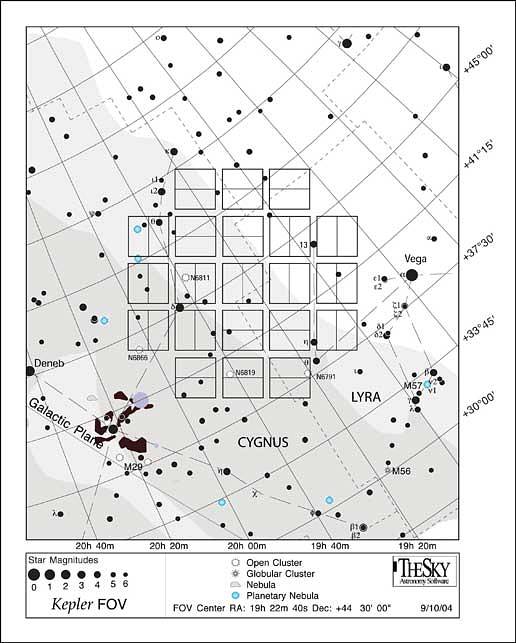This star chart illustrates the large patch of sky that NASA’s Kepler mission will stare at for the duration of its three-and-a-half-year lifetime. The planet hunter’s full field of view occupies 100 square degrees of our Milky Way galaxy, in the constellations Cygnus and Lyra.
Kepler’s focal plane, or the area where starlight is focused, is depicted on the star chart as a series of 42 vertical and horizontal rectangles. These rectangles represent the 95-megapixel camera’s 42 charge-coupled devices, or CCDs. Scientists selected the orientation of the focal plane’s field of view to avoid the region’s brightest stars, which are shown as the largest black dots. Some of these bright stars can be seen falling in between the CCD modules, in areas that are not imaged. This was done so that the brightest stars will not saturate large portions of the detectors. Saturation causes signals from the bright stars to spill, or “bloom,” into nearby planet-hunting territory.
Image credit: Software BisqueFull resolution (3MB)
1 min read




























